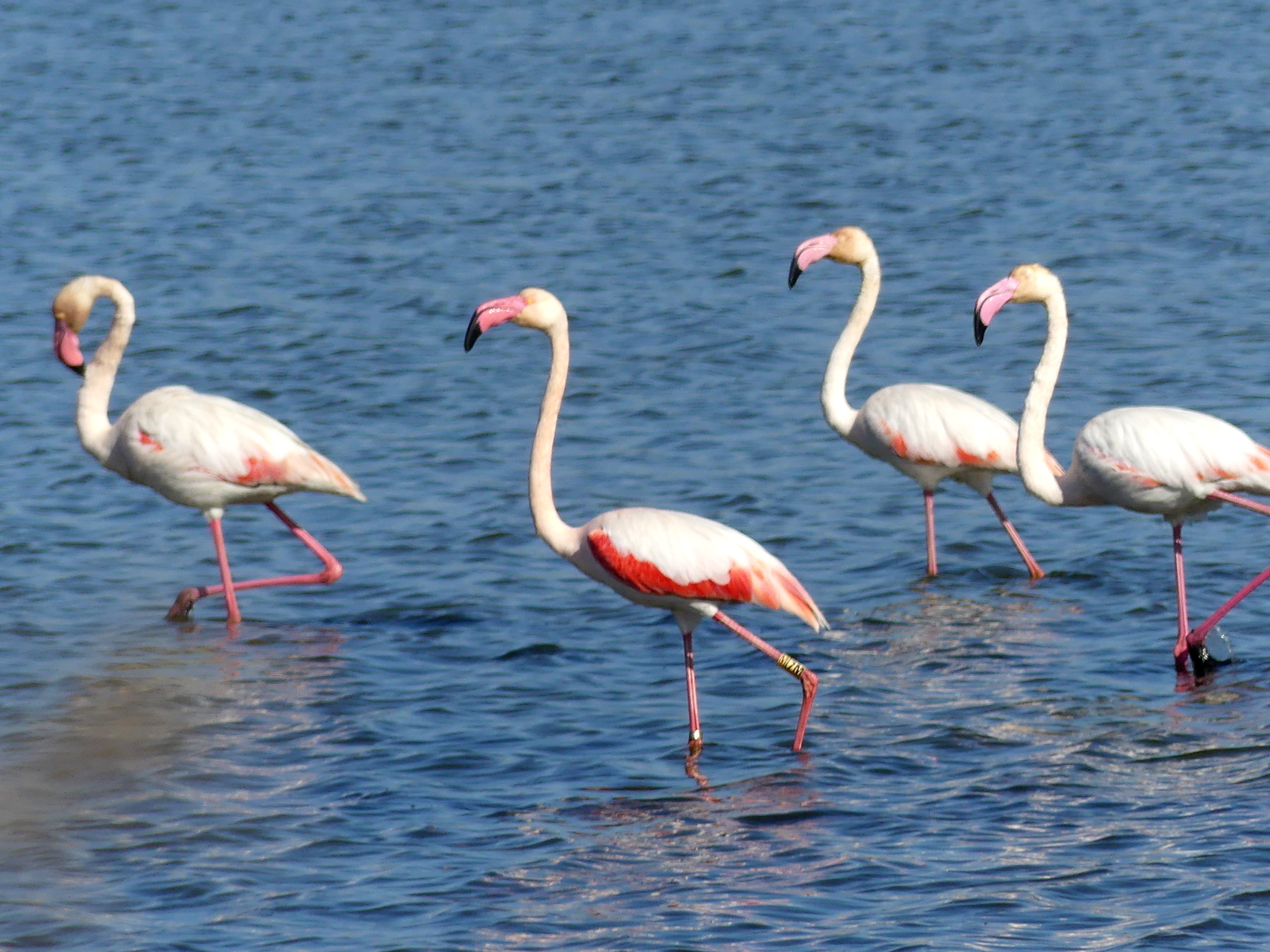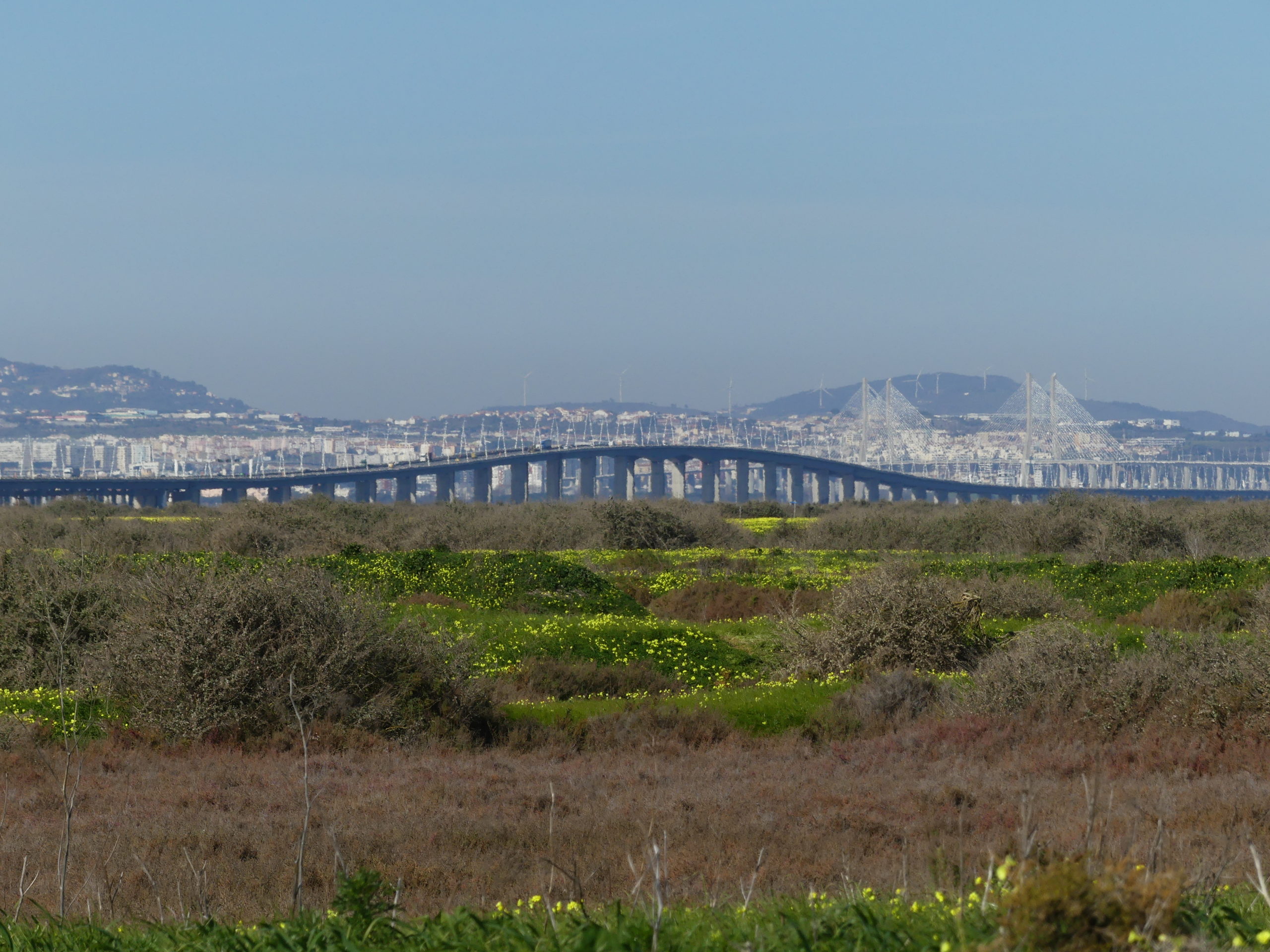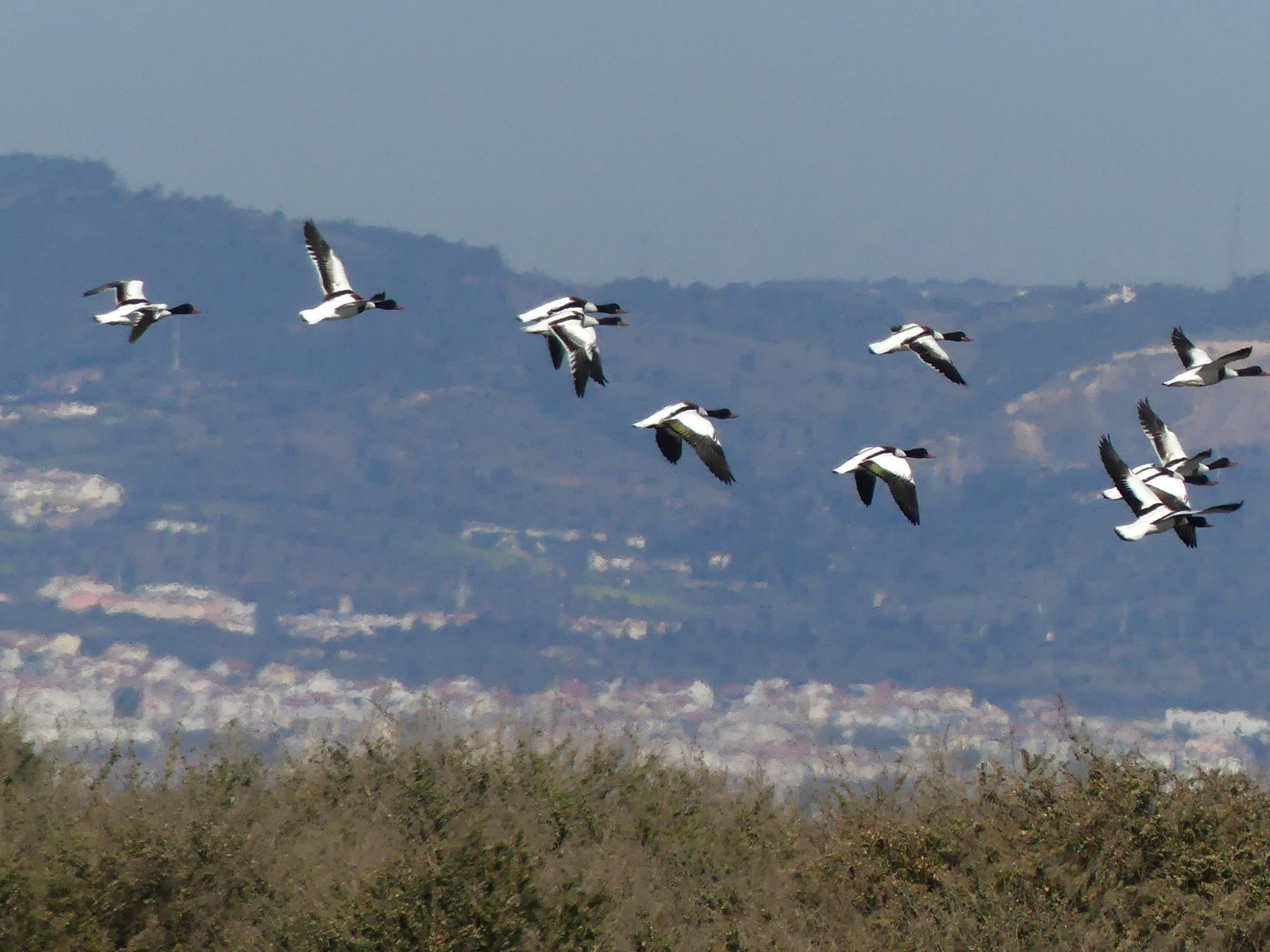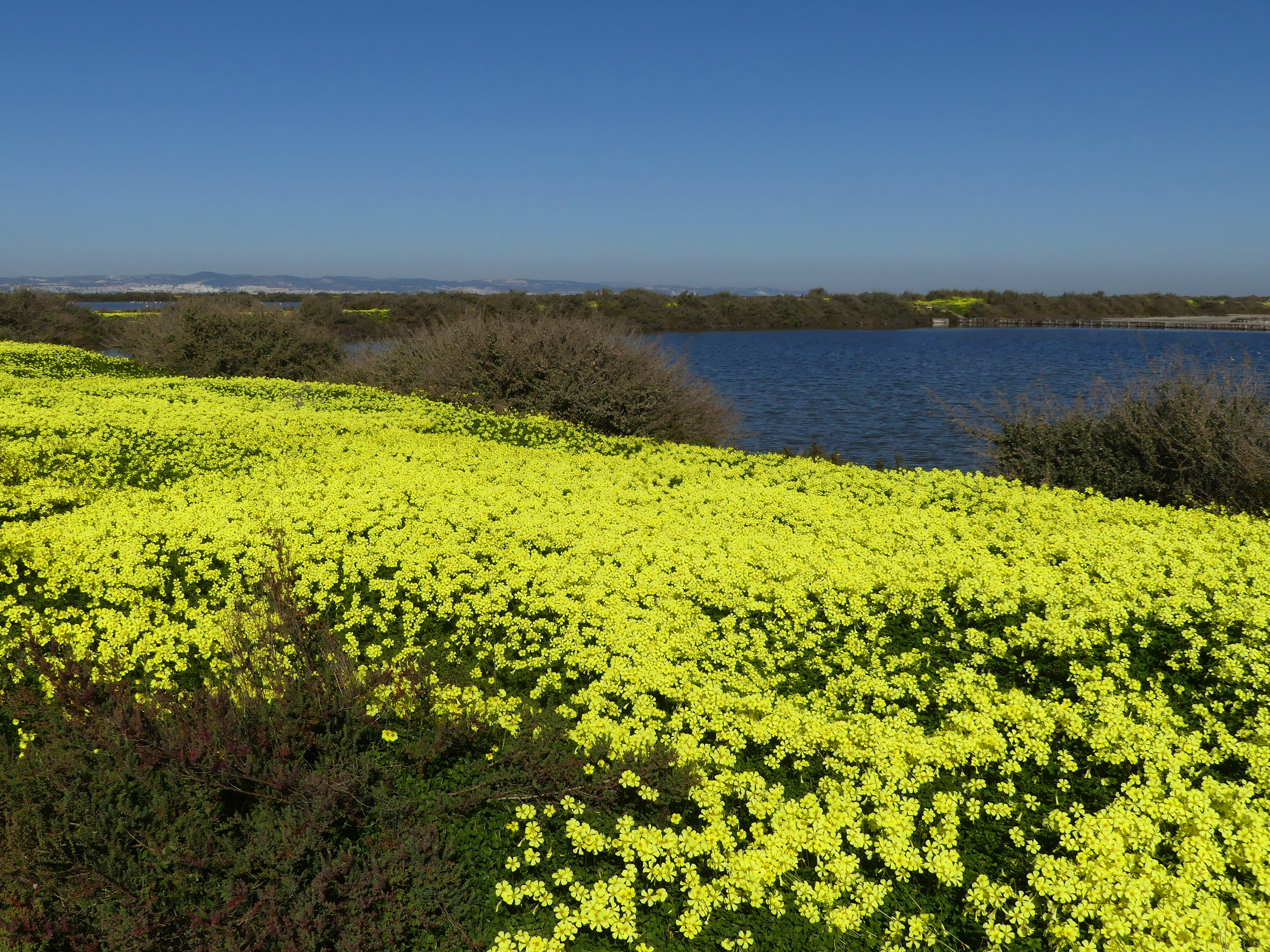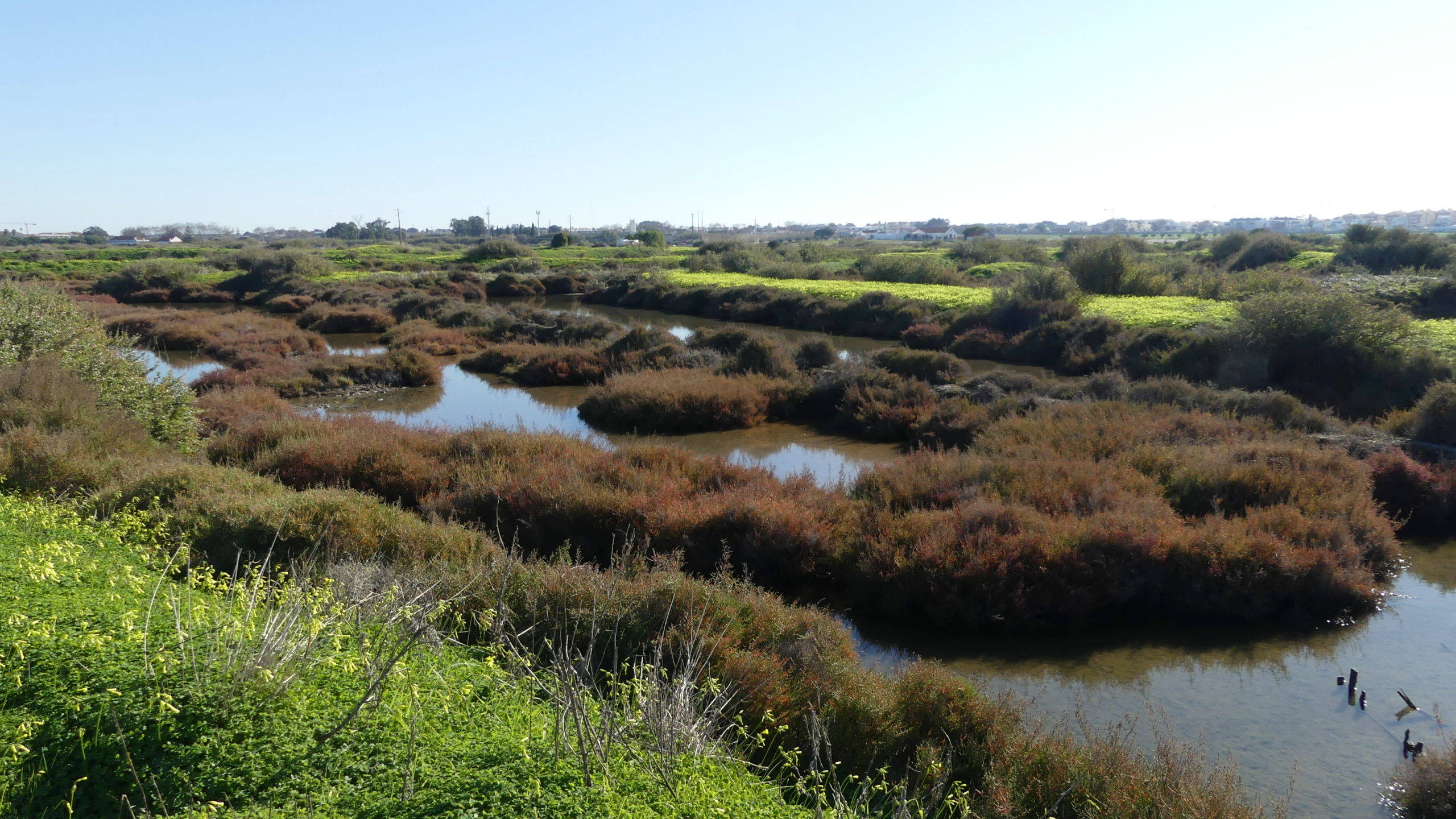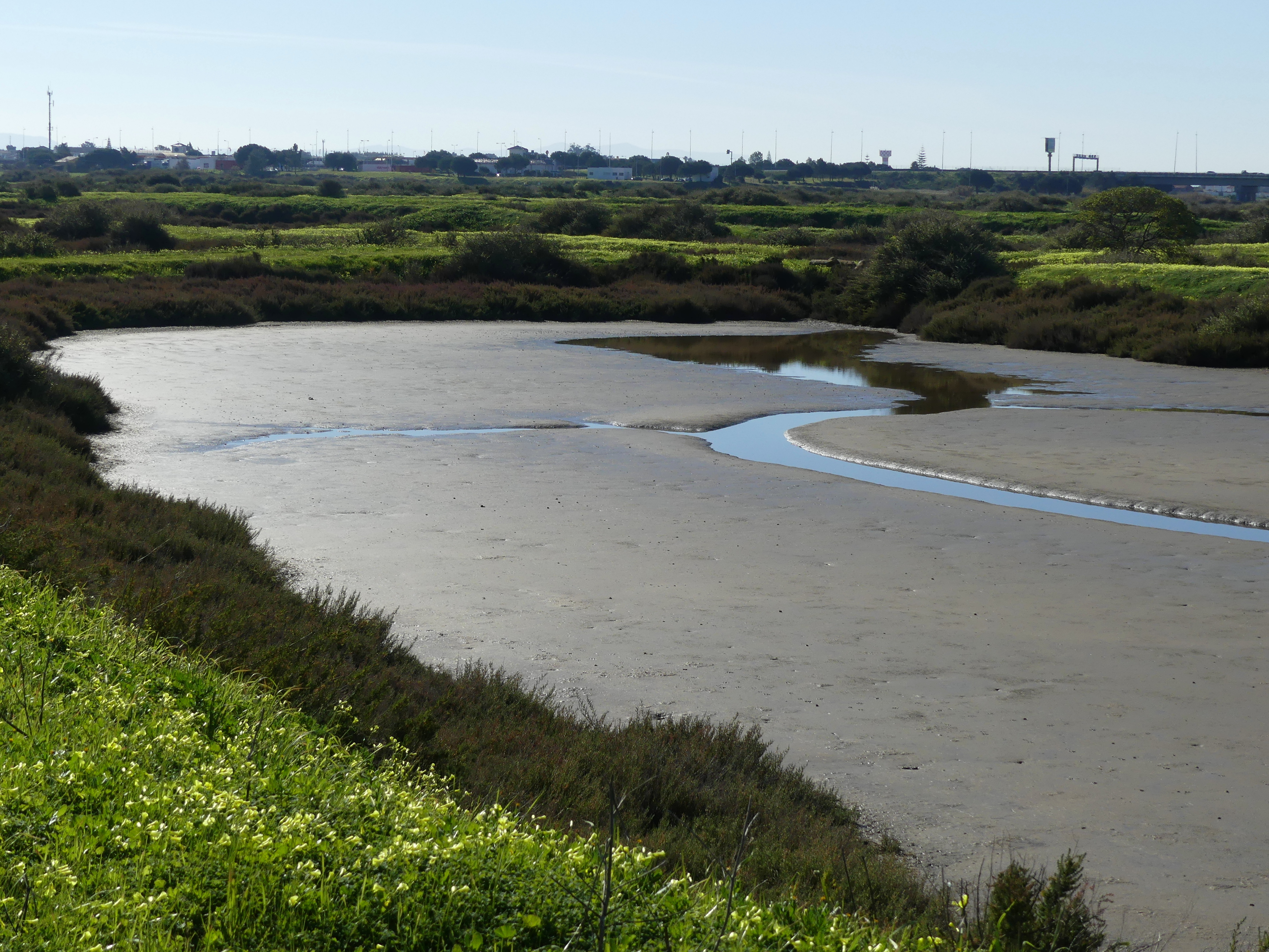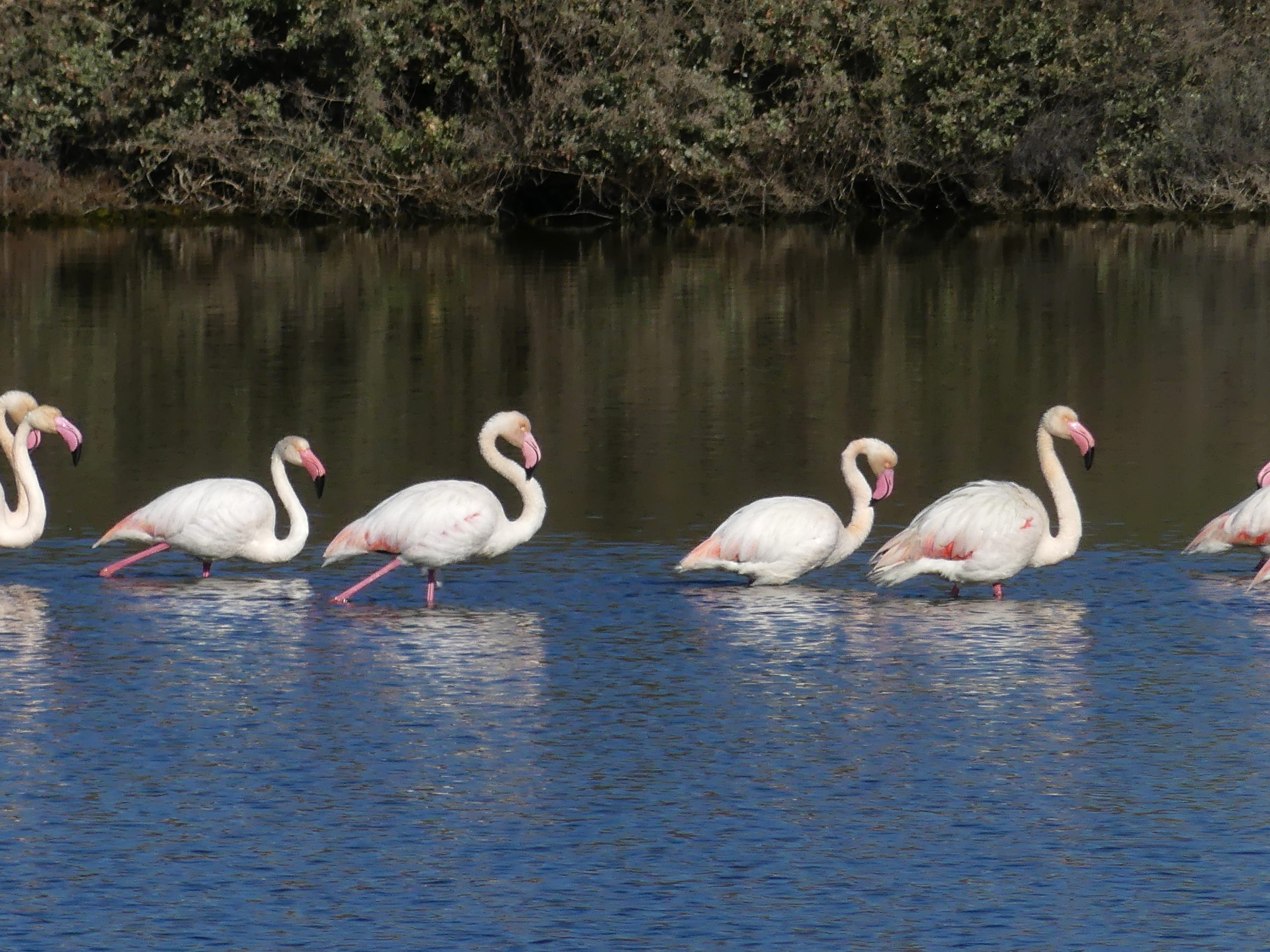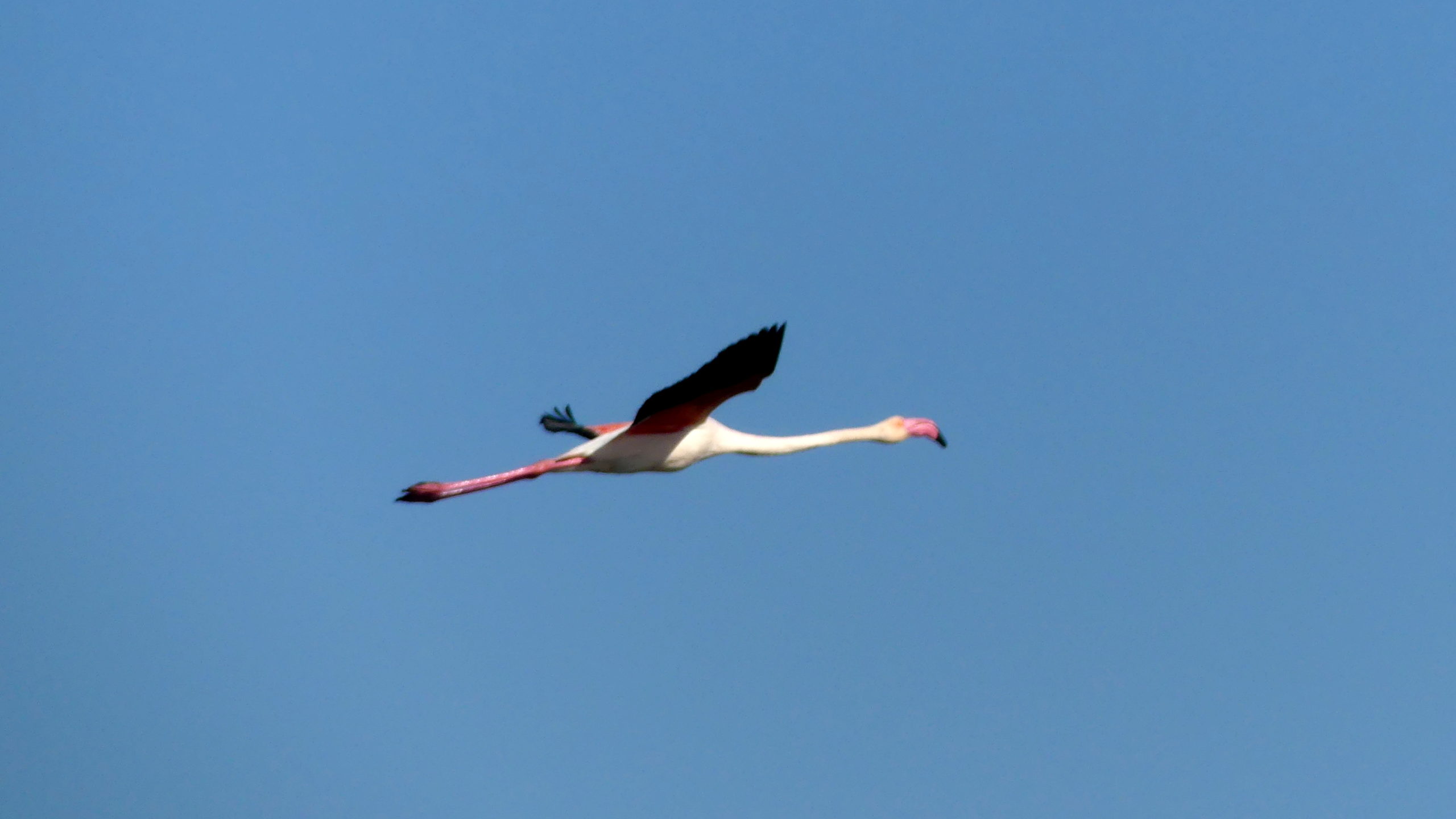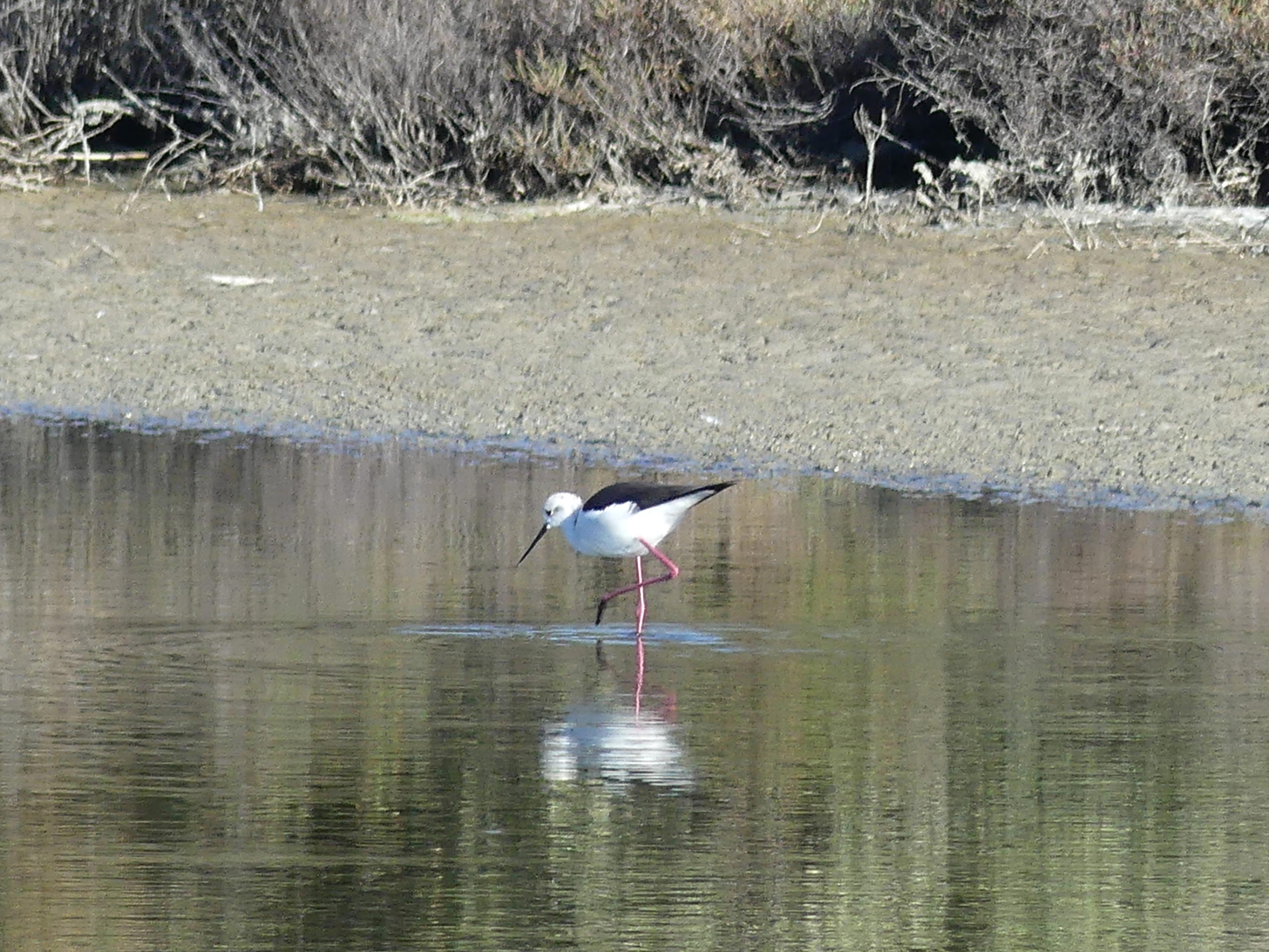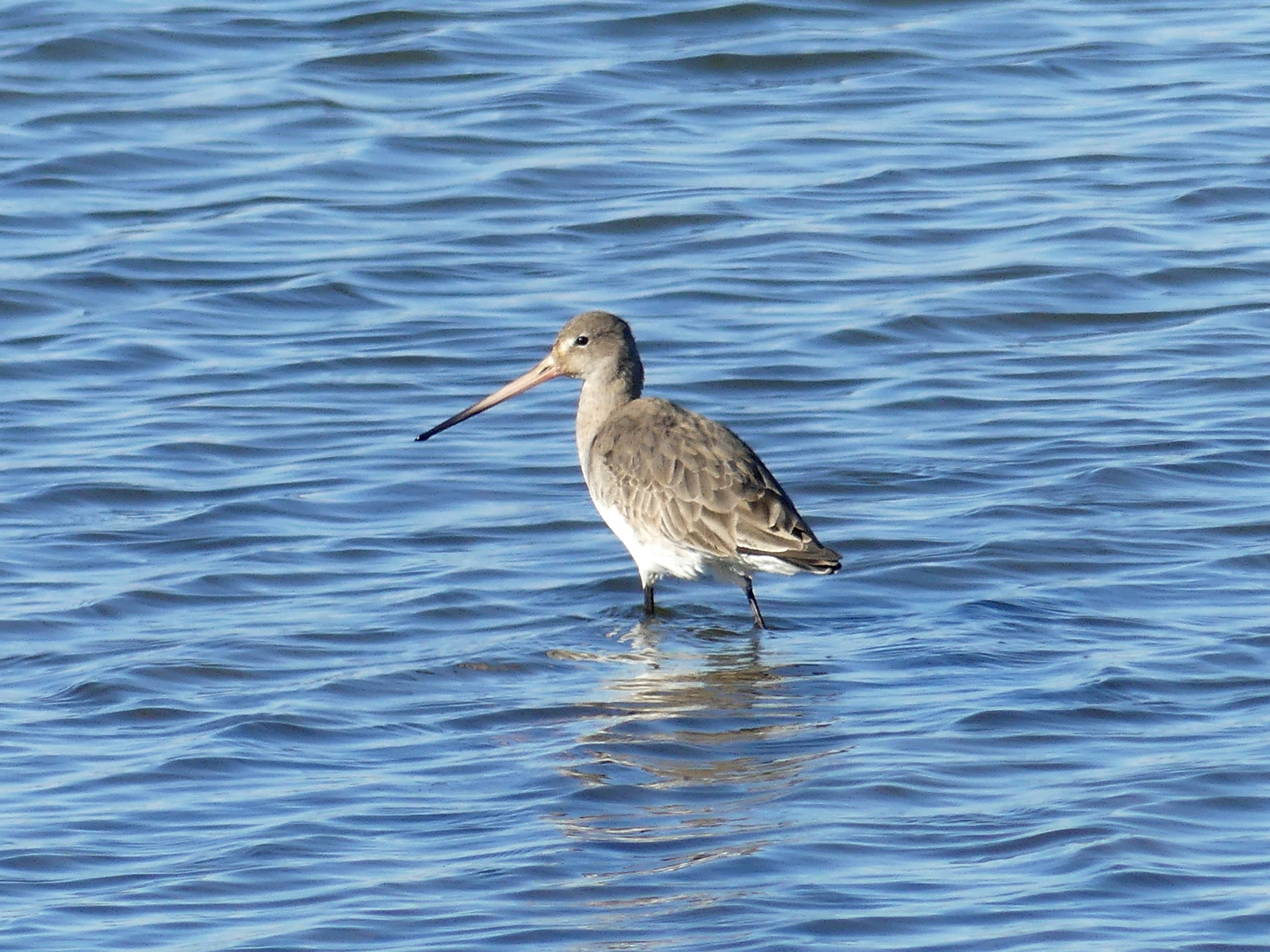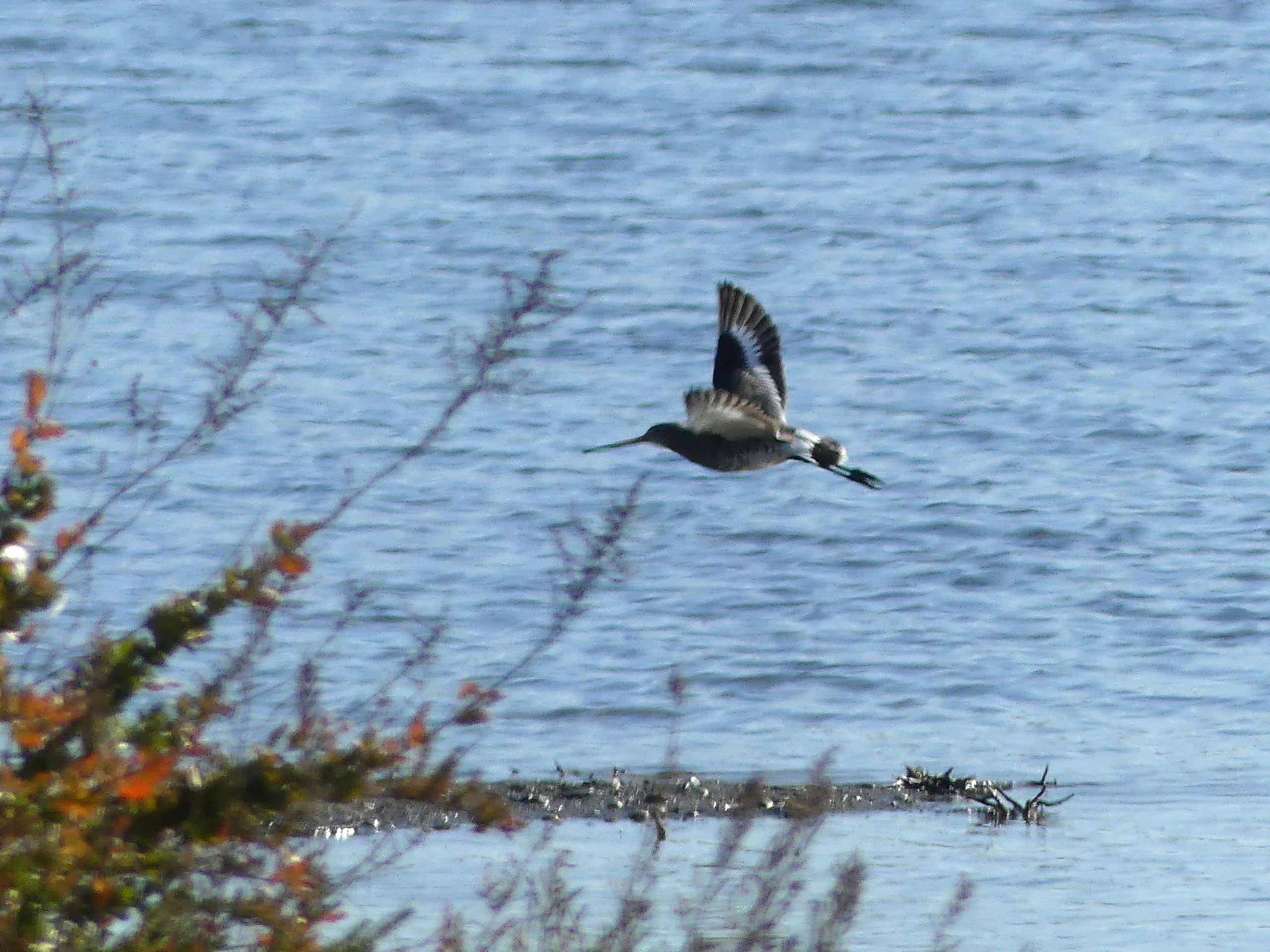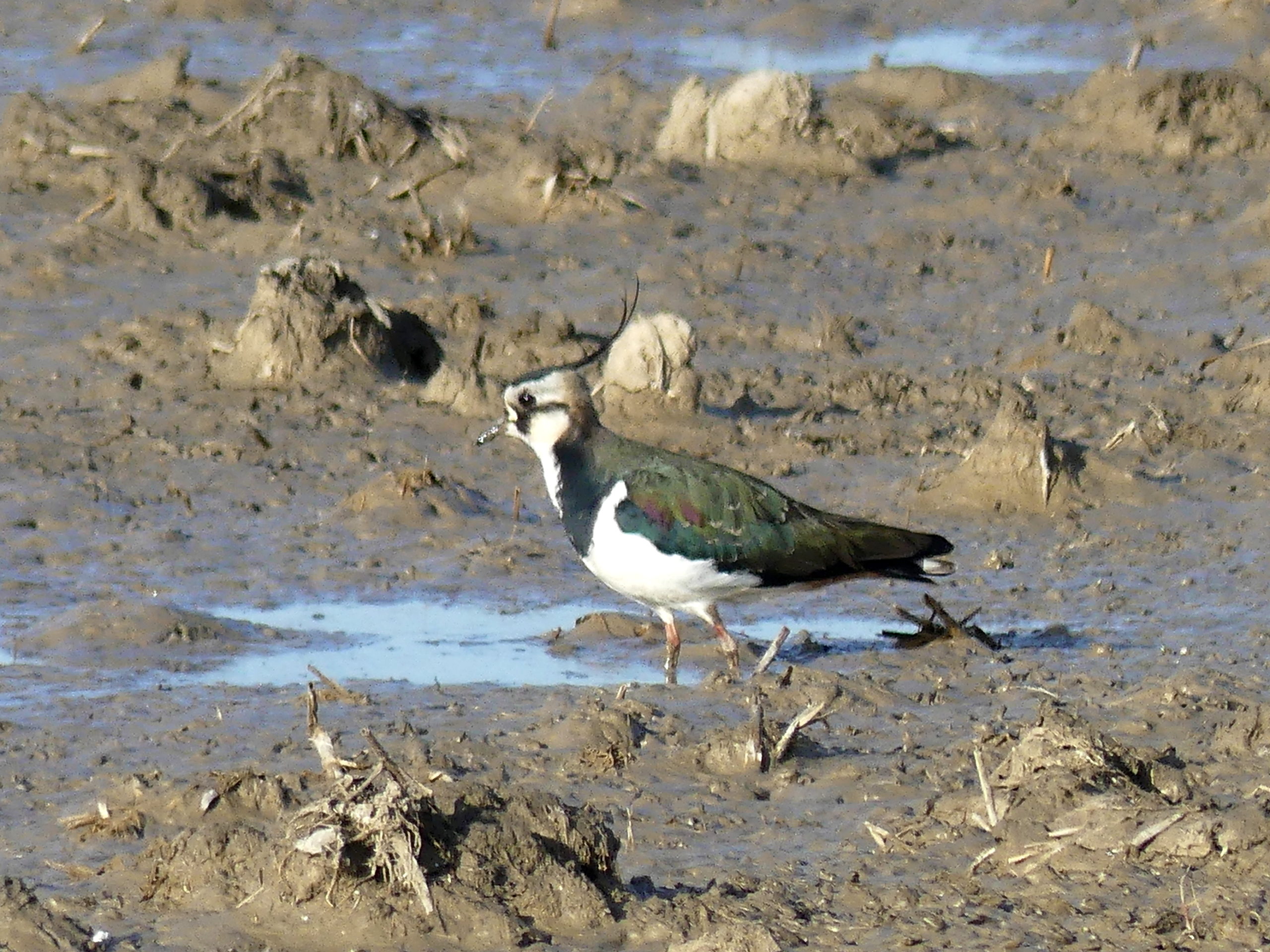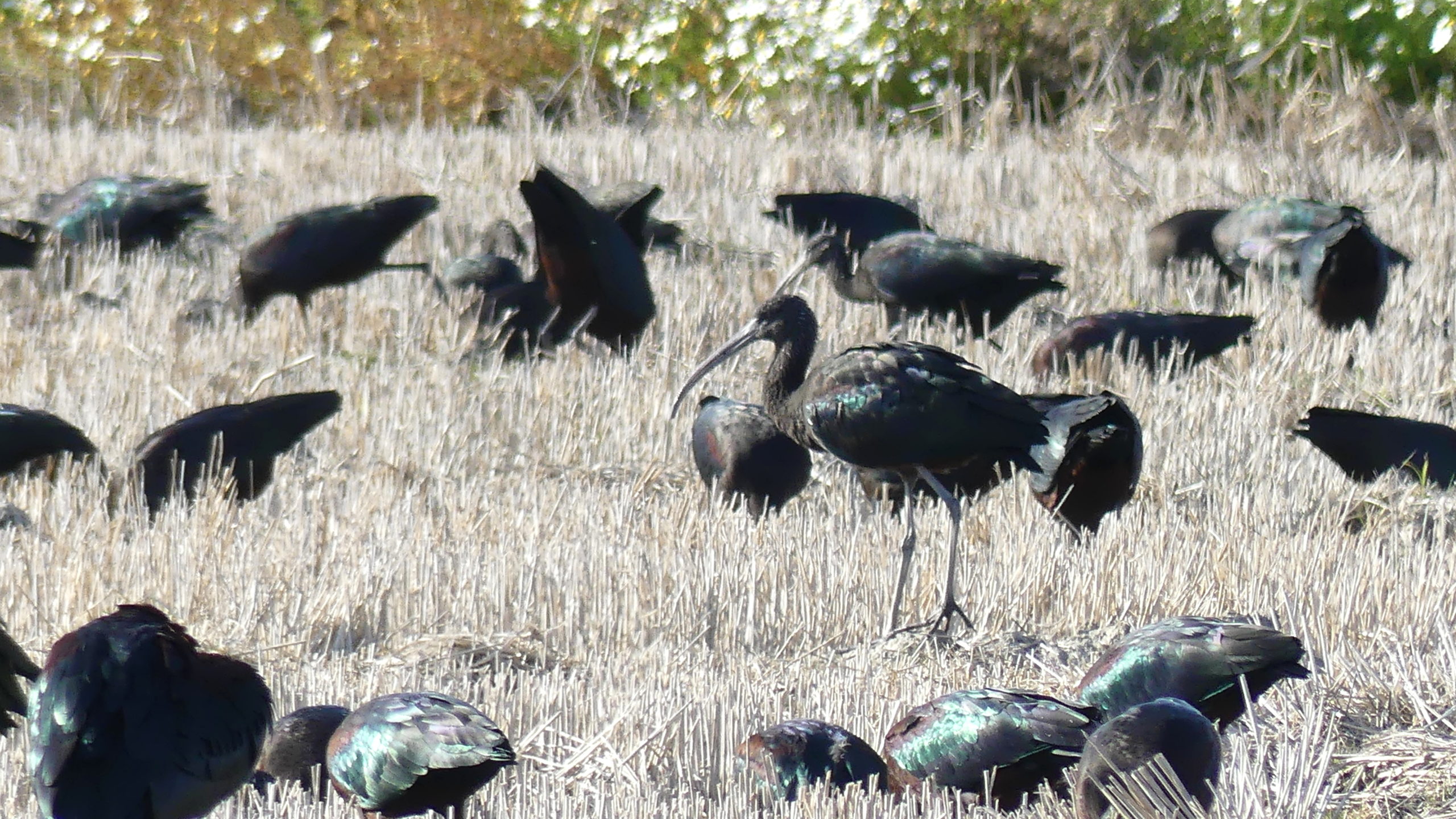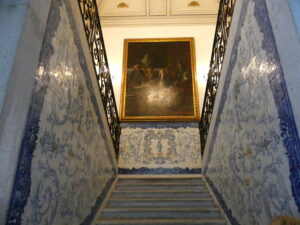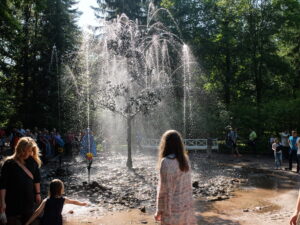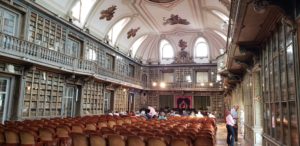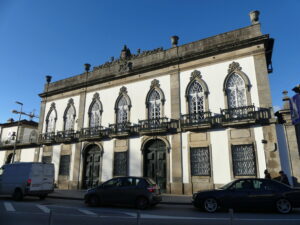In brief: Undistracted by the city just across the Tejo river or the busy bridge from it within the marsh, we were diverted instead by all the shore birds and ducks.
When not pecking at insects or nibbling on tiny sea creatures, the birds and other wildlife of the Samouco salt flats near Alcochete can eye Lisbon across the wide Tejo River. The big city is easy to locate, hillside tumbles of whitewashed buildings at the other end of the space-age Vasco da Gama bridge and causeway, the longest within Europe at over 17 kilometers (10 miles). That low causeway runs near their neighborhood, buzzing with traffic, but the wildlife mostly pays little attention to it.
The shelducks we saw considered us a threat, however, whenever we came near, though we thought we were harmless. Here they again flee from us showing off their splendid colors – greenish-black head, bright red bill, chevrons of white wings against black (and somewhat noticeable dark green), plus a chestnut band on the breast.
Nor did we pay much attention to the long man-made bridge, as we roamed Samouco for three hours, delighting in natural wetlands that were once commercial salt pans. Rather, the banks of the wetlands all spangled with these pinwheel-shaped yellow flowers, proved much more of a distraction for us.
Surrounding the muddy, but still bluish, waters are yellow flowers, green banks and red-tinged hedges – a tranquil riot of color.
After months of drought in the region, we were concerned that the wetlands – and birds – might have disappeared. Indeed, at low tide, some channels evidenced more mud than water.
For the Tejo here is really an estuary, a mix of salt and fresh waters, subject to the rise and fall of ocean tides.
Perhaps at high tide this gleaming pool would be filled with water, but at low tide the dearth of rain in the area shows.
Yet, along our hike, there was still plenty of water flow to attract a wide variety of shore birds and ducks – over twenty that we identified, plus one skittish rabbit – undistracted by the city or the busy connection to it.
Shore birds
We saw hundreds of greater flamingoes at Samouco, but these truly flaunted their color. The distinctive pink/red comes from their diet of pink crustaceans.
OK, we love flamingoes, so enjoy this particularly sinuous group as it followed its leader to a more delectable spot.
Though more balletic while stepping through the wetlands, the greater flamingoes still impressed us in flight.
A black winged stilt attentively tiptoes through his dining area. We also saw a few Pied Avocets, its slender necked cousin dressed in black and white as well.
A black-tailed godwit in winter plumage takes a pause from pushing its long nose, well beak, into the salty mud.
This black tailed godwit aims for a quieter place to feed.
And nearby…
We did not have time to visit the nearby Tejo Reserve called EVOA. That will wait for another trip. But we drove through the flooded rice fields and other fallow hectares outside those wetlands. Here solitary northern lapwings prowled, with their distinctive markings and y-shaped flip of hair.
Clumped together in the agricultural fields outside of EVOA, hundreds of glossy ibises preened and stalked. They were a bit wary of us, easing away when we stopped, but when they were more alarmed they all took flight and formed a swirling wave of ibis in the sky.
The attractions of Samouco – for the wildlife as well as for us – were plentiful.
(To enlarge any picture above, click on it. Also, for more pictures from Portugal, CLICK HERE to view the slideshow at the end of the itinerary page.)


